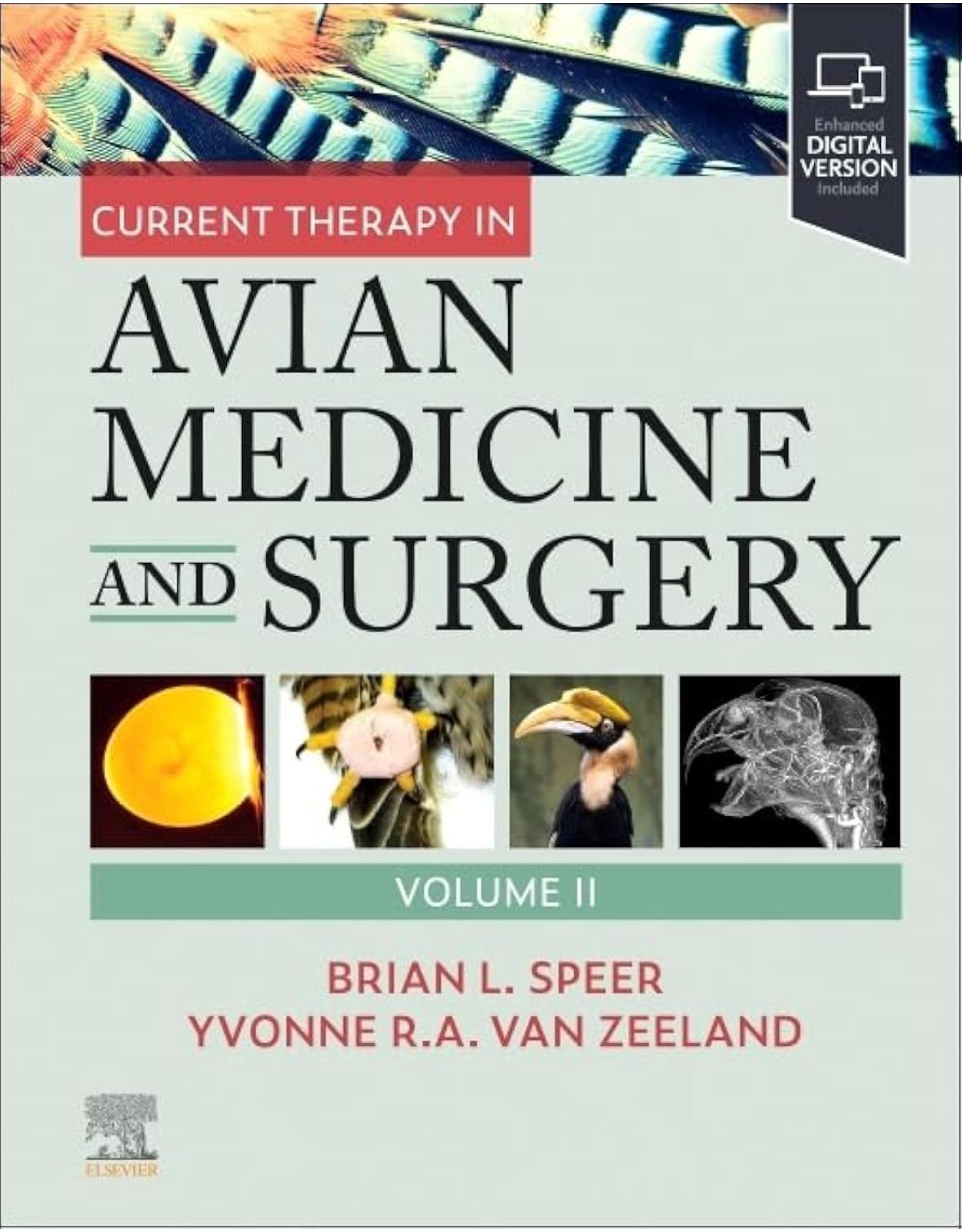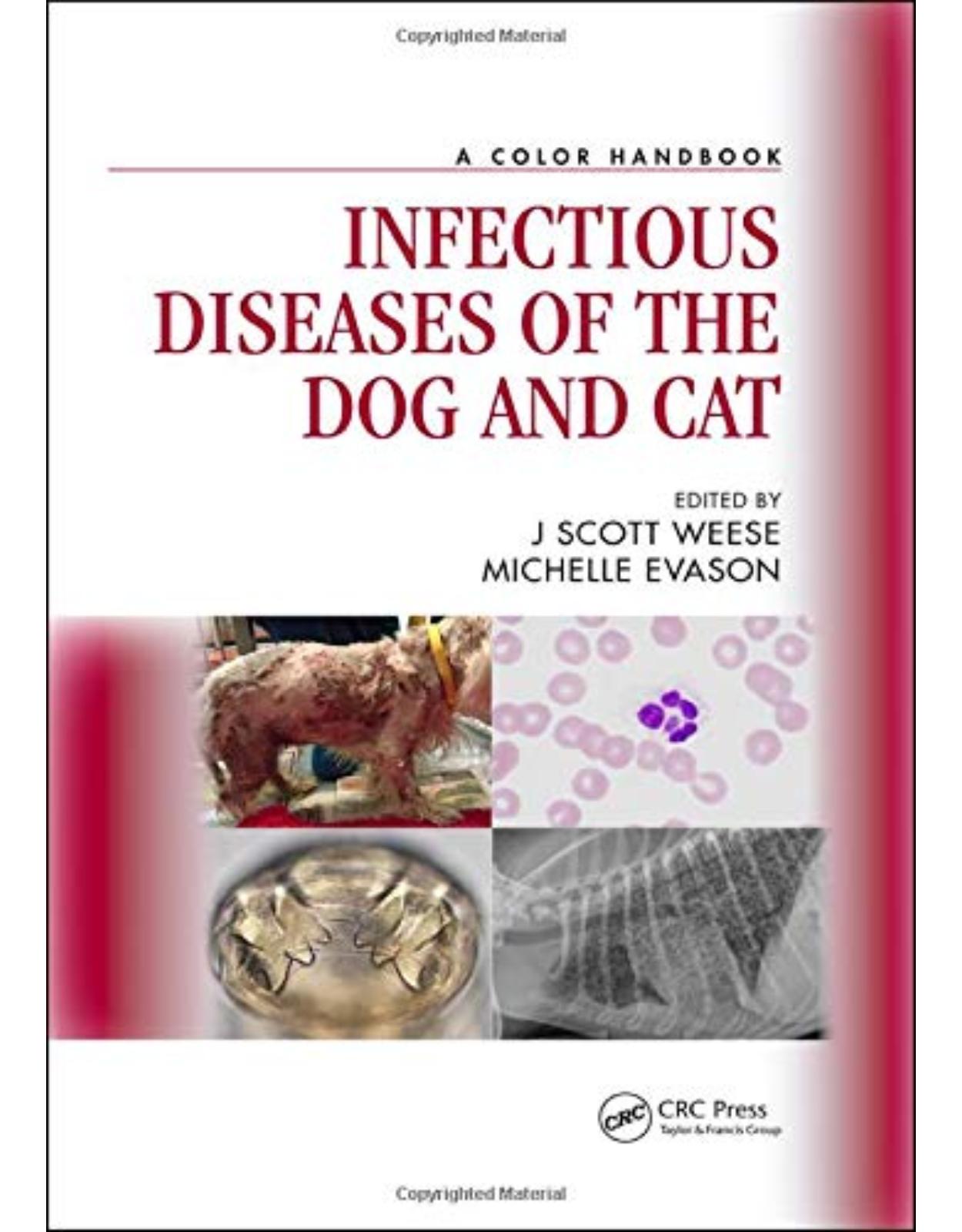
Feline Reproduction
Livrare gratis la comenzi peste 500 RON. Pentru celelalte comenzi livrarea este 20 RON.
Disponibilitate: La comanda in aproximativ 4 saptamani
Autor: Aime Johnson
Editura: CABI
Limba: Engleza
Nr. pagini: 304
Coperta: Paperback
Dimensiuni: 248 x 189 x 18 mm
An aparitie: 10 May 2022
Description:
Cats are one of the most popular pets in the world and cat owners want advanced veterinary care. There is a growing interest in purebred cats which requires the highest quality reproductive care from the general veterinary practitioners. In Feline Reproduction, all aspects of reproduction in the queen and the tom are presented by a global author team. Beginning with basic anatomy and normal reproduction, this book reviews practical knowledge about feline pregnancy, neonatal care, breeding soundness exams, and semen cryopreservation. This book also provides the most current and comprehensive information about abnormal conditions affecting feline reproduction, such as infertility, spontaneous abortion and contraception. Covering both pets and nondomestic species, this feline reproduction book will prove to be essential for the general veterinary practitioner, veterinary student, animal scientist, and experienced cat breeder.
Table of Contents:
1 Reproductive Anatomy and Puberty in the Queen
1.1 Anatomy in the Queen
1.2 Puberty in the Queen
1.3 References
2 Feline Estrous Cycle
2.1 Seasonality
2.2 Ovulation Physiology
2.3 Phases of the Estrous Cycle
2.3.1 Proestrus
2.3.2 Estrus
2.3.3 Interestrus
2.3.4 Diestrus
2.3.5 Anestrus
2.3.6 Summary
2.4 References
3 Manipulation of the Estrous Cycle
3.1 Introduction
3.2 Estrus Induction
3.2.1 Photoperiod and social stimulation
3.2.2 Hormonal treatment
3.2.3 GnRH Agonists
3.2.4 General consideration
3.2.5 Conclusion
3.3 Estrus Suppression
3.3.1 Progestins
Medroxyprogesterone acetate (MPA)
Megestrol acetate
Proligestone (PROL)
Other progestins
Conclusion
3.3.2 Induction of ovulation and pseudopregnancy for short-term suppression
3.3.3 Light protocols and social interactions
3.3.4 Melatonin (N-acetyl-5-methoxytryptamine)
Conclusion
3.4 GnRH agonists
3.4.1 Use in adult queens
3.4.2 Pre-pubertal use
3.5 Conclusion
3.6 References
4 Breeding and Cattery Management
4.1 Introduction
4.2 Overall Management
4.3 Lighting
4.4 Breeding Management
4.5 Breeding Records
4.6 Management of the Pregnant Queen
4.7 References
5 Causes of Infertility in the Queen
5.1 Introduction
5.2 Infertility Among Pedigree Queens
5.3 Lack of puberty
5.4 Lack of Cyclicity in an Adult Queen
5.5 Problems Related to Mating
5.6 Spontaneous Ovulation
5.7 Uterine Pathology
5.8 Hormonal Problems
5.9 Infectious Problems
5.10 Chromosomal or Genetic Problems
5.11 Nutrition
5.12 Environmental Pollutants
5.13 Conclusion
5.14 References
6 Pregnancy Diagnosis and Management
6.1 Introduction
6.2 Embryonic and Fetal Development in Cats and the Hormonal Control of Pregnancy
6.2.1 Embryonic, fetal, and placental development
6.2.2 Hormonal control of pregnancy
6.3 Pregnancy Diagnosis
6.3.1 Macroscopical Changes in the Pregnant Queen
Physical development of the pregnant queen
Abdominal palpation
6.3.2 Hormonal assays
6.3.3 Imaging
Ultrasound
Radiology
6.4 Pregnancy Aging
6.4.1 Precise timing of the matings
6.4.2 Ultrasound diagnosis
Evolution of the conceptus and organs
Fetometry
6.4.3 Radiographic diagnosis
6.5 Management Of The Pregnant Queen
6.5.1 Nutrition
6.5.2 Parasite prevention and vaccination
6.5.3 Good practice in the use of usual drugs during pregnancy
6.6 Conclusion
6.7 References
Appendix 6.1
7 Causes of Abortion
7.1 Introduction
7.2 Noninfectious Abortion
7.3 Infectious Abortion
7.3.1 Viral pathogens
7.3.2 Bacterial
7.3.3 Protozoa
7.4 Case Management
7.5 References
8 Periparturient Disease in the Queen
8.1 Prepartum and Peripartum Disorders
8.1.1 Uterine torsion
8.1.2 Extrauterine fetuses
8.1.3 Vaginal prolapse
8.1.4 Uterine prolapse
8.2 Postpartum Disorders
8.2.1 Retained fetal membranes
8.2.2 Metritis
8.2.3 Eclampsia (puerperal tetany)
8.2.4 Mastitis
8.2.5 Lactation failure/agalactia
8.3 References
9 Management of Parturition
9.1 Background/Introduction
9.2 Differentiating Eutocia from Dystocia
9.3 Medical Management of Dystocia
9.4 Cesarean Section
9.5 References
10 Neonatal Resuscitation and Care
10.1 Introduction
10.2 Preparing for Birth
10.3 Anesthesia for Cesarean Section
10.4 Neonatal Resuscitation
10.5 After Care
10.6 Neonatal Isoerythrolysis
10.7 Conclusion
10.8 References
11 Neonatal Diseases
11.1 Introduction
11.2 General Clinical Signs
11.3 Etiology
11.4 Infectious Causes of Kitten Mortality
11.4.1 Respiratory diseases
11.4.2 Gastrointestinal diseases
11.4.3 Systemic disease
11.5 References
12 Termination of Pregnancy
12.1 Introduction
12.2 Surgical Termination of Pregnancy
12.3 Medical Termination of Pregnancy
12.3.1 Options that act by withdrawal of progesterone
Prostaglandins
Cabergoline
Bromocryptine and metergoline
12.3.2 Progesterone receptor antagonism
Aglepristone
12.4 References
13 Disorders of the Ovary
13.1 Introduction
13.2 Congenital Abnormalities of the Ovary
13.3 Ovarian Remnant Syndrome
13.4 Ovarian Cysts
13.5 Periovarian Cysts
13.6 Ovarian Neoplasia
13.6.1 Ovarian epithelial neoplasia
13.6.2 Ovarian stroma and sex cord neoplasia
Granulosa cell tumor (GCT)
Interstitial cell tumor
13.6.3 Germ cell tumors
Teratoma
Dysgerminoma
13.6.4 Summary
13.7 References
14 Disorders of the Uterus
14.1 Development of the Uterus
14.1.1 Abnormal uterine development
14.2 Endometrial Polyps
14.3 Hydrometra/Mucometra
14.4 Cystic Endometrial Hyperplasia-Pyometra Complex
14.4.1 Pathophysiology
14.4.2 Signalment, history and physical examination
14.4.3 Clinical signs
14.4.4 Diagnosis
14.4.5 Treatment
Surgical therapy
Medical therapy
Monitoring response to treatment
14.4.6 Outcomes
14.5 Neoplasia
14.6 References
15 Disorders of the Caudal Reproductive Tract
15.1 Congenital Abnormalities
15.2 Vaginitis
15.3 Vaginal Prolapse
15.4 Neoplasia
15.5 References
16 Disorders of the Mammary Glands
16.1 Anatomy
16.2 Mammary Neoplasia
16.2.1 Diagnosis and staging
16.2.2 Treatment
16.2.3 Chemotherapy
16.3 Mammary Hyperplasia
16.3.1 Signalment, history and physical examination
16.3.2 Pathogenesis
16.3.3 Diagnosis
16.3.4 Treatment
16.3.5 Prognosis
16.4 Mastitis
16.4.1 Diagnosis
16.4.2 Treatment
16.4.3 Kitten management
16.5 References
17 Reproductive Anatomy and Puberty in the Tom
17.1 Embryology
17.1.1 External genitalia
17.1.2 Internal tubular tract
17.2 Puberty
17.3 Prepuce and Penis
17.3.1 Prepuce
17.3.2 Penis
Os penis
Penile spines
17.4 Scrotum and Testes
17.4.1 Scrotum
17.4.2 Testes and epididymides
Spermatogenesis
Sperm morphology
17.5 Accessory Glands
17.5.1 Prostate
17.5.2 Bulbourethral glands
17.5.3 Urethra
17.6 References
18 Semen Collection and Evaluation
18.1 Introduction
18.2 Sperm Collection
18.2.1 Artificial vagina (AV)
18.2.2 Electroejaculation (EE)
18.2.3 Urethral catheterization after pharmacological induction (Ur.Ca.P.I.)
18.3 Sperm Evaluation
Macroscopic parameters
Microscopic parameters
18.4 Sperm Dosage and Site for Artificial Insemination
18.5 References
19 Causes of Infertility in the Tom
19.1 Introduction
19.2 Signalment and History
19.3 Physical Examination
19.4 Causes of Infertility
19.4.1 Poor or lack of libido
9.4.2. Inability to mate
19.4.3 Failure to produce litters after mating
19.5 Diagnosis and Ancillary Tests
19.5.1 Semen collection and evaluation
19.5.2 Other diagnostic tests
19.6 Treatment
19.7 References
20 Disorders of the Testicles and Scrotum
20.1 Congenital Disorders
20.1.1 Cryptorchidism
20.1.2 Monorchidism and anorchidism
20.1.3 Polyorchidism
20.1.4 Testicular hypoplasia
20.1.5 Ovotestes
20.1.6 Cystic rete testis
20.2 Acquired Disorders of the Testes and Scrotum
20.2.1 Testicular neoplasia
20.2.2 Testicular trauma
Testicular torsion
20.2.3 Inflammatory and/or infectious conditions
20.2.4 Degeneration
20.3 References
21 Disorders of the Accessory Sex Glands
21.1 Overview
21.2 Bacterial Prostatitis
21.3 Prostatic Abscessation
21.4 Urethroadenocystitis
21.5 Paraprostatic Cyst
21.6 Squamous Metaplasia of the Prostate Gland
21.7 Prostatic Adenocarcinoma
21.8 Prognosis
21.9 References
22 Disorders of the Prepuce and Penis
22.1 Overview
22.2 Congenital Disorders
22.2.1 Ambiguous genitalia
Male pseudohermaphrodite – persistent Müllerian duct syndrome
Male pseudohermaphrodite – testicular feminization
Female pseudohermaphrodite – congenital adrenal hyperplasia
22.2.2 Other congenital abnormalities of the penis and prepuce
Penile frenulum
Penile hypoplasia
Hypospadias
Cloacal duplication
22.3 Acquired Disorders
22.3.1 Trauma
Punctures or lacerations of the prepuce and penis
Fracture of the os penis
22.3.2 Balanoposthitis
22.3.3 Hair ring
22.3.4 Phimosis
22.3.5 Paraphimosis
22.3.6 Neoplasia
22.4 References
23 Semen Cryopreservation
23.1 Introduction
23.2 Extenders
23.3 Cooling Rates and Techniques
23.4 Thawing
23.5 Suggested Protocol
23.6 References
24 Use of Epididymal Sperm for Preservation of Genetics and Artificial Insemination
24.1 Introduction
24.2 Fundamental Biology of the Epididymis
24.3 Collection, Storage, and Shipment of Testes
24.3.1 Removal of testes from tom cats
24.3.2 Procedure for epididymal sperm collection in laboratory (Table 24.1)
Dissection of testes and epididymides
Sperm recovery
Sperm collection medium options
24.4 Cryopreservation of Epididymal Sperm
Formulas for sperm freezing media
24.4.1 Procedure for sperm freezing
Two-step slow freeze (cryopreservation) method
Ultra-fast freezing (vitrification) method (Swanson et al., 2017)
24.4.2 Procedure for thawing/rewarming
Thawing (for slow freeze cryopreserved samples)
Rewarming vitrified sperm pellets (Swanson et al., 2017)
24.5 Use of Epididymal Sperm for Breeding
24.6 Perspectives
24.6.1 Practical perspectives
24.7 References
25 Clinical Approach to Infertility
25.1 Introduction
25.2.1 History
25.2.2 Gynecological examination
25.2.3 Failure to cycle
Treatment options
25.2.4 Failure to allow mating
25.2.5 Failure to ovulate
Persistent estrus
25.2.6 Failure to become pregnant
25.2.7 Failure to carry pregnancy to term – early embryonic loss, fetal death and still
25.3 The Tomcat
25.3.1 History
25.3.2 Physical and andrological examination
25.3.3 Semen collection and evaluation
25.3.4 Additional examinations
Bacteriological/virological examination of the semen
Hormone analysis
Karyotyping
25.3.5 Common problems and possible treatment approaches
Failure to mate and failure to achieve an erection
Failure to induce ovulation
Failure to achieve pregnancy
25.4 References
26 Options for Contraception in Female and Male Felids
26.1 Introduction
26.2 Females
26.2.1 Progestins
Megestrol acetate
Medroxyprogesterone acetate
Proligestone
26.2.2 GnRH agonists
26.2.3 Melatonin
26.2.4 Other
26.3 Males
26.3.1 GnRH agonists
26.3.2. Melatonin
26.3.3 Other non-steroid options
26.4 References
27 Assisted Reproduction Techniques in the Domestic Cat
27.1 Introduction
27.2 Genome Rescue Methods
27.2.1 Oocytes
27.2.2 Embryos
27.2.3 Ovarian and testicular tissue
27.2.4 Future perspectives on genome rescue from tissues
27.3 Embryo Production Technologies
27.3.1 IVM, IVF, ICSI and beyond
27.4 Conclusion
27.5 References
28 Application of Assisted Reproductive Technology (ART) in Non-Domestic Felids
28.1 Introduction
28.2 Semen Collection, Analysis and Cryopreservation
28.3 Artificial Insemination
28.4 In Vitro Fertilization, Embryo Culture and Cryopreservation
28.5 Embryo Transfer
28.6 References
Index
Cabi
Back Cover
| An aparitie | 10 May 2022 |
| Autor | Aime Johnson |
| Dimensiuni | 248 x 189 x 18 mm |
| Editura | CABI |
| Format | Paperback |
| ISBN | 9781789247084 |
| Limba | Engleza |
| Nr pag | 304 |
-
51900 lei 49200 lei











Clientii ebookshop.ro nu au adaugat inca opinii pentru acest produs. Fii primul care adauga o parere, folosind formularul de mai jos.